.
.
Jazz Performance
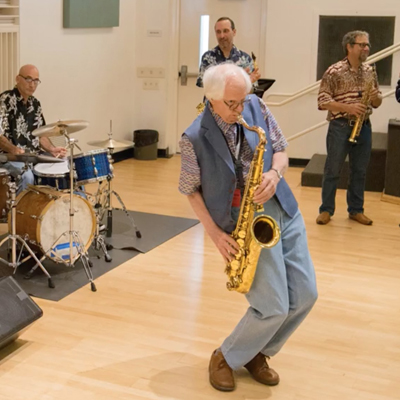
Peter Pearce has had a lifelong passion for jazz music. It began at a very young age. He was born in 1936 and grew up in a family that not only listened to jazz but Pearce’s father, George Pearce, was a self-taught piano player. George was an Organic Chemist who graduated from college around 1930. He had a college jazz/dance band during the 1920s and he played a kind of stride piano, a style of jazz music that was common at that time. By the time Peter was 4 years old the family record collection (78 rpm) included many swing bands, along with Django Reinhart, and the great boogie-woogie piano players, Maede Lux Lewis and Albert Ammons.

As Peter grew older his love for this music called jazz continued to develop. Curiously he did not learn to play an instrument or participate in music programs at school. However, he did continue to broaden his listening. As World War II began to wind down jazz music began to move toward a more progressive and sophisticated form. The music transitioned from the swing era of the 1930s which was dominated by the dance music of the big bands to small combo groups. This new music exhibited more complex harmonies along with increasingly virtuosic instrumental improvisation. This jazz became known as BeBop and sometimes modern jazz. By the time Peter was 15 he had fully embraced this new music.
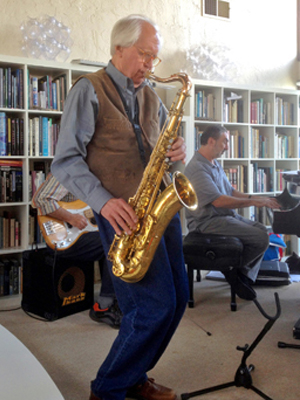
Peter’s interest in jazz music began to intensify while in college in Chicago. During this period (1954 to 1958) he was able to hear live performances of many of the great innovators of this music including Miles Davis, John Coltrane, Sonny Rollins, Bud Powel, Thelonious Monk, Charles Mingus, Clifford Brown, Max Roach, Horace Silver, Art Blakey, Milt Jackson, et al. Listening to these musicians at that time was a revelation as they invented a new jazz vocabulary.
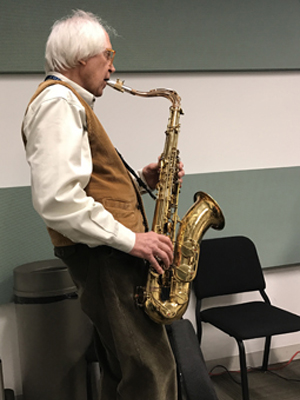
Because Peter grew up listening to jazz in the late 1930 and early 1940s and then transitioned to modern jazz in the 1950s he was witness to this amazing and compelling musical transformation – history in the making. He became even more passionate about this music. Yet he still did not properly learn to play an instrument and to play this music he loved so dearly.
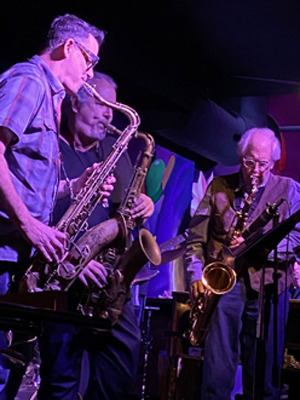
As time passed Pearce became increasingly interested in the saxophone as a compelling and quintessential jazz instrument. He closely followed the music of many jazz saxophonists with a particular interest in the performances of John Coltrane and Joe Henderson. After collecting vinyl records and later CD recordings, and after years as a passionate listener Pearce decided he wanted to learn to play the music. And he wanted to play the saxophone. So he acquired a saxophone and began to study the music and the saxophone, but not until he was 45 years old. He is still working on the music and the mastering of the saxophone. Pearce’s playing has become good enough that he is able to play jazz in a variety of settings from open jam sessions to structured jazz workshop programs. The images show Pearce playing in such varied settings.
The Astonishing Saxophone
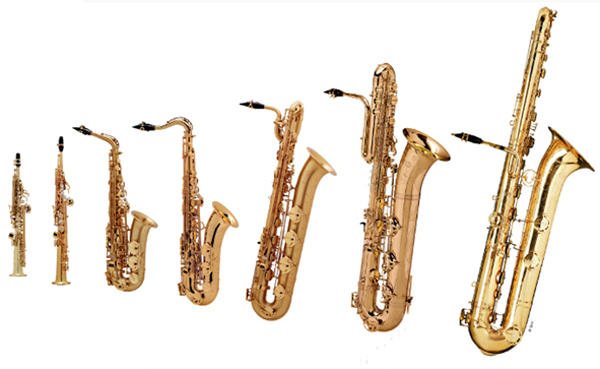
Pearce’s interest in the saxophone extends from the music it makes possible to its incredible and beautiful design. The saxophone was invented and developed by Adolphe Sax in the first half of the nineteenth century. The instrument was introduced to the public in 1850 at the Great Exposition held in the Crystal Palace in London.
The design of the saxophone incorporates amazing acoustical properties along with a wonderfully effective ergonomic design. The saxophone was conceived by Sax as a family of instruments representing an extended range from very high to very low notes. The image shows seven of the more commonly used variations including sopranino, soprano, alto, tenor, baritone, bass, and contrabass. These are shown in the image in the proper scale to each other. There are others in the family who are rarely used or even seen. These include the C-melody, C-soprano, MezoSoprano, and Subcontrabass, among others. In music today the most commonly used Saxophones as solo instruments are the tenor, alto, and soprano.
